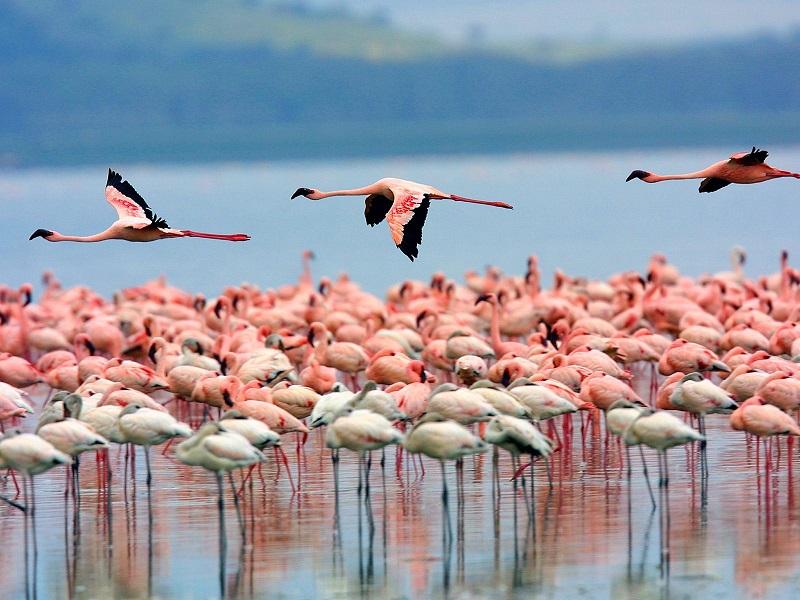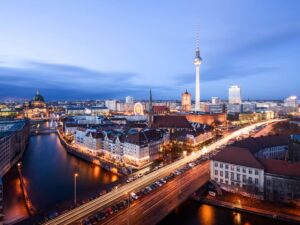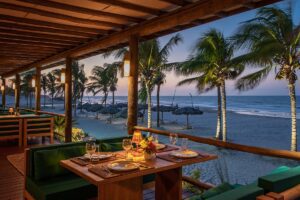Located in central Kenya, Lake Nakuru National Park is a stunning wildlife haven renowned for its breathtaking landscapes and rich biodiversity. Covering around 188 square kilometers, the park is centered around the picturesque Lake Nakuru, one of the Rift Valley’s soda lakes.
Famous for its vibrant flocks of flamingos and diverse wildlife, Lake Nakuru National Park offers visitors an unforgettable safari experience. This guide provides a comprehensive overview of the park, its wildlife, the best times to visit, and essential information for travelers.
Overview of Lake Nakuru National Park
Established in 1961, Lake Nakuru National Park was initially created as a bird sanctuary to protect the numerous bird species that inhabit the area, particularly the flamingos. Over the years, the park’s conservation efforts have expanded to include a wide variety of wildlife and habitats. The park is now fenced to provide a sanctuary for endangered species like the black and white rhinoceros.
Lake Nakuru National Park is part of the larger ecosystem of the Great Rift Valley and is known for its diverse landscapes. These include the alkaline lake, acacia woodlands, grasslands, and rocky cliffs. The park’s elevation ranges from 1,750 meters at the lake level to 2,000 meters at the highest points, offering varied habitats for different species.
The park’s main attraction is Lake Nakuru, which covers about a third of the park’s total area. The lake’s shallow, alkaline waters attract vast numbers of flamingos, creating a spectacular pink blanket along the shores. Besides flamingos, the park is home to over 450 bird species, making it a paradise for birdwatchers.
Wildlife in Lake Nakuru National Park
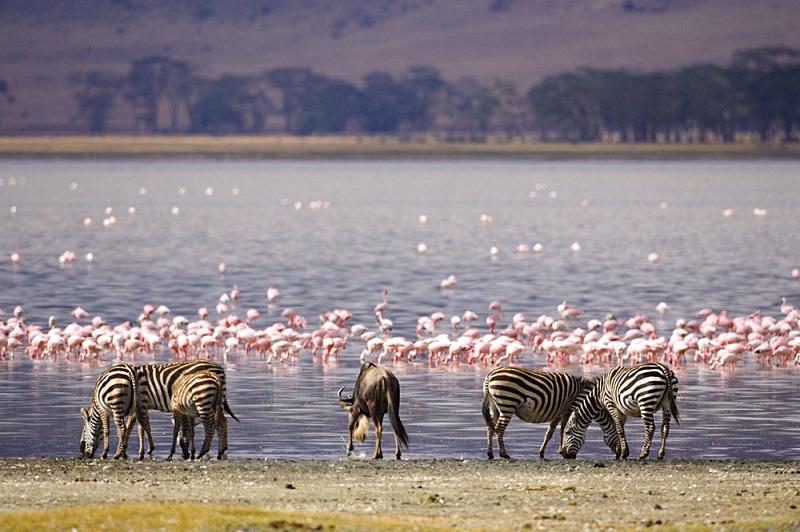
Lake Nakuru National Park is famous for its diverse and abundant wildlife. The park’s alkaline lake is the main attraction, drawing thousands of flamingos that create a stunning pink spectacle along the shoreline. These lesser and greater flamingos feed on the abundant algae in the lake’s waters, making Lake Nakuru one of the best places in the world to see these beautiful birds.
The park supports over 450 bird species, including pelicans, cormorants, herons, kingfishers, and fish eagles. The variety of habitats within the park, from the lake and its surrounding wetlands to the woodlands and grasslands, attracts a wide range of birdlife. Birdwatchers will find plenty to keep them occupied, with opportunities to spot both resident and migratory species.
Lake Nakuru National Park is also home to a diverse array of mammals. The park is one of the few places in Kenya where visitors can see both black and white rhinoceroses. The fenced sanctuary within the park provides a safe haven for these endangered animals, making sightings relatively common.
The park’s rhino population is a significant conservation success story and a highlight for visitors. Other large mammals in the park include lions, leopards, buffaloes, and Rothschild’s giraffes. The latter is a rare and endangered subspecies of giraffe that has been successfully reintroduced to the park. The park’s dense acacia woodlands provide cover for animals such as baboons, vervet monkeys, and colobus monkeys.
The Best Time to Visit Lake Nakuru National Park
Lake Nakuru National Park is a year-round destination, but the best time to visit depends on what you want to experience. The dry season, from June to March, is ideal for wildlife viewing. During these months, animals congregate around the lake and other water sources, making them easier to spot.
The wet season, from April to May, brings lush, green landscapes and an abundance of birdlife. While wildlife may be more dispersed due to the availability of water, the park is less crowded, offering a more peaceful experience. The wet season is particularly good for birdwatching, as migratory species arrive in large numbers.
The presence of newborn animals during this period also adds to the appeal for wildlife enthusiasts. The flamingo population at Lake Nakuru varies with water levels and food availability, so the best time to see large flocks can change. Generally, the dry season is more reliable for seeing the famous pink spectacle, but it’s always a good idea to check recent reports before planning your visit.
Getting to Lake Nakuru National Park from Nairobi
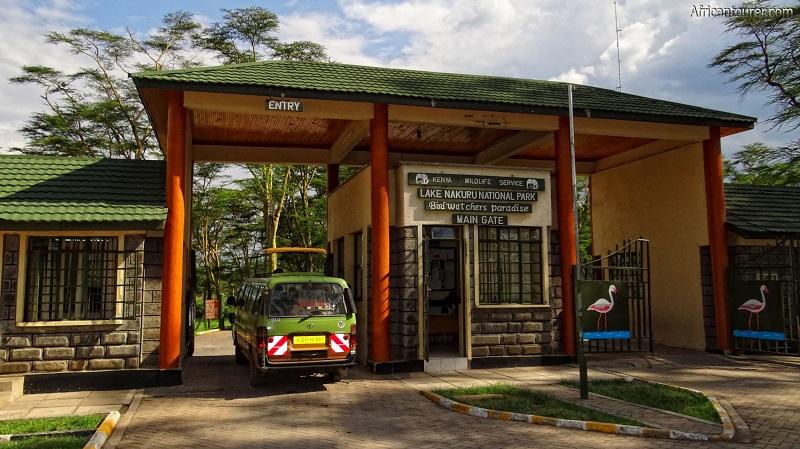
Lake Nakuru National Park is located about 160 kilometers northwest of Nairobi, Kenya’s capital. The most common way to reach the park is by road, which takes approximately 2 to 3 hours. The drive from Nairobi offers scenic views of the Great Rift Valley and passes through several small towns and picturesque landscapes.
For those preferring to fly, there are daily scheduled flights from Nairobi’s Wilson Airport to the nearby Naishi airstrip, which serves the park. The flight takes about 30 minutes, providing a quick and convenient option for reaching the park. Upon arrival, visitors can arrange transfers to their lodges or camps within the park.
Self-drive options are available, and many visitors opt to rent 4×4 vehicles to navigate the park’s roads. Guided tours and safari packages often include transportation, making it easier for visitors to explore Lake Nakuru without worrying about logistics. It is advisable to book flights and transport arrangements in advance, especially during peak tourist seasons.
Other Activities in Lake Nakuru National Park
Lake Nakuru National Park offers a variety of activities that allow visitors to experience its unique landscapes and wildlife from different perspectives. Game drives are the most popular activity, providing opportunities to explore the park’s diverse habitats and see its abundant wildlife. Early morning and late afternoon game drives are particularly rewarding, as animals are most active during these cooler parts of the day.
Birdwatching is another major attraction in Lake Nakuru National Park. With over 450 bird species recorded, the park is a paradise for bird enthusiasts. The best spots for birdwatching include the lake’s shores, the acacia woodlands, and the cliffs overlooking the lake. Guided birdwatching tours can help visitors identify the various species and learn about their behaviors.
Photography tours are also popular, taking advantage of the park’s stunning landscapes and iconic wildlife. The combination of the alkaline lake, flamingos, and Mount Longonot in the distance provides unique photographic opportunities. Specialized tours with professional photographers can help visitors capture the best shots of Lake Nakuru’s wildlife and scenery.
For those interested in learning more about the local culture, visits to nearby communities and cultural centers can be arranged. These visits provide insights into the traditional lifestyles and customs of the people living around the park. Visitors can learn about local conservation efforts, see traditional dances, and purchase handmade crafts as souvenirs.
Park Fees for Lake Nakuru National Park
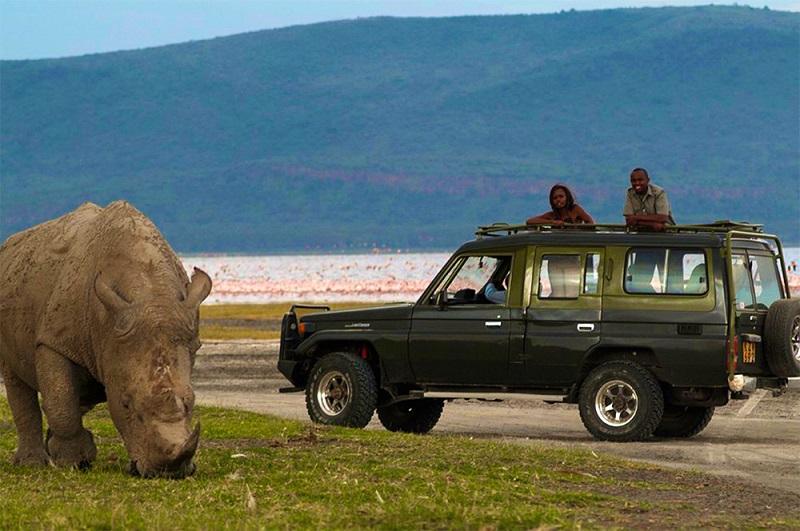
As of 2024, the entrance fees for Lake Nakuru National Park are as follows:
- Non-Resident Adults: $60 per person per day
- Non-Resident Children (3-18 years): $30 per child per day
- Kenyan Citizens and Residents Adults: KES 860 per person per day
- Kenyan Citizens and Residents Children (3-18 years): KES 215 per child per day
These fees contribute to the park’s conservation efforts and the maintenance of its facilities. Prices are subject to change, so it is advisable to check with the Kenya Wildlife Service or your tour operator for the most current information.
FAQs: Touring Lake Nakuru National Park
Do I Need a Car to Tour the Park?
Yes, a car is necessary to explore Lake Nakuru National Park due to its size and the distances between different areas. A 4×4 vehicle is recommended, especially for game drives and navigating the park’s sometimes challenging terrain. Visitors can opt for self-drive safaris or join guided tours provided by lodges and tour operators.
Are Unguided Walks Allowed in the Park?
Unguided walks are not permitted in Lake Nakuru National Park due to the presence of dangerous wildlife. Guided walks with experienced rangers are available and provide a safe way to explore the park on foot. These walks offer educational insights into the park’s ecosystems and wildlife.
How Much is a Game Drive in the Park?
The cost of a game drive in Lake Nakuru National Park varies depending on the tour operator, duration, and whether it is a private or shared drive. Prices generally range from $50 to $150 per person for a half-day drive. Some lodges include game drives in their accommodation packages. It is advisable to book game drives in advance, especially during peak tourist seasons, to ensure availability.
Conclusion
Lake Nakuru National Park is a destination of unparalleled natural beauty and wildlife diversity. From the vast flocks of flamingos to the stunning views of the Great Rift Valley, the park offers an unforgettable safari experience for nature enthusiasts and adventure seekers.
